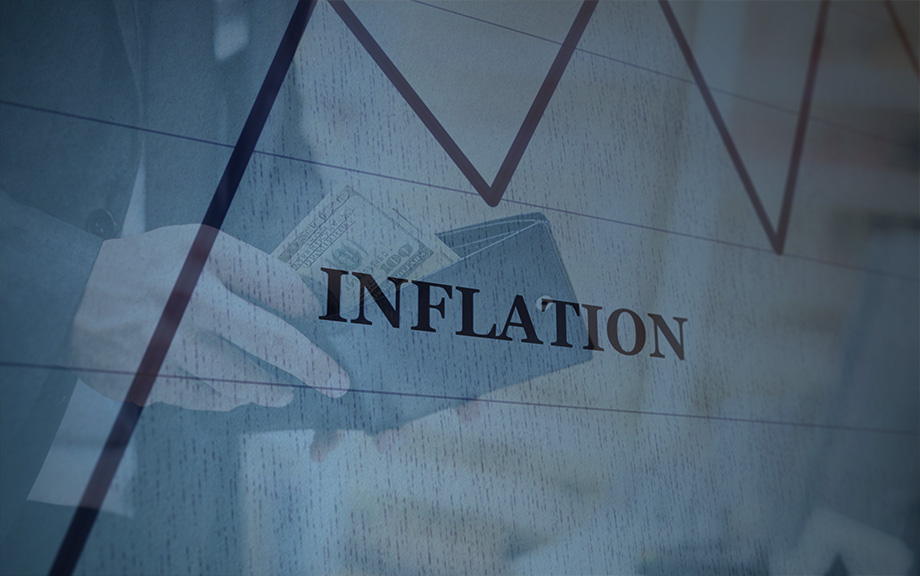Global Trends in U.S. Inflation Dynamics

A key feature of the post-pandemic inflation surge was the strong correlation among inflation rates across sectors in the United States. This phenomenon, however, was not confined to the U.S. economy, as similar inflationary pressures have emerged in other advanced economies. As generalized as the inflation surge was, so was its decline from the mid-2022 peak. This post explores the common features of inflation patterns in the U.S. and abroad using an extension of the Multivariate Core Trend (MCT) Inflation model, our underlying inflation tracker for the U.S. The Global MCT model purges transitory noise from international sectoral inflation data and quantifies the covariation of their persistent components—in the form of global inflation trends—along both country and sectoral dimensions. We find that global trends play a dominant role in determining the slow-moving and persistent dynamics of headline consumer price index (CPI) inflation in the U.S. and abroad, both over the pre-pandemic and post pandemic samples.
How Large Are Inflation Revisions? The Difficulty of Monitoring Prices in Real Time

With prices quickly going up after the COVID-19 pandemic, inflation releases have rarely been as present in the public debate as in recent years. However, since inflation estimates are frequently revised, how precise are the real-time data releases? In this Liberty Street Economics post, we investigate the size and nature of revisions to inflation. We find that inflation estimates for a given month can change substantially as subsequent data vintages are released. As an example, consider March 2009. With the economy contracting amid the Global Financial Crisis, the twelve-month inflation rate for personal consumption expenditures (PCE) excluding food and energy dropped from an initial estimate of 1.8 percent to 0.8 percent in the current series. The difference is dramatic and points to the difficulty of monitoring inflation in real time. Our results suggest that there is significant uncertainty in measuring inflation, and the key features of the recent spike and subsequent moderation of inflation may look quite different in hindsight once further revisions have taken place.
Where Is Inflation Persistence Coming From?

Elevated inflation continues to be a top-of-mind preoccupation for households, businesses, and policymakers. Why has the post-pandemic inflation proved so persistent? In a Liberty Street Economics post early in 2022, we introduced a measure designed to dissect the buildup of the inflationary pressures that emerged in mid-2021 and to understand where the sources of its persistence are. This measure, that we labeled Multivariate Core Trend (MCT) inflation analyzes whether inflation is short-lived or persistent, and whether it is concentrated in particular economic sectors or broad-based.
MCT Update: Inflation Persistence Declined Significantly in April

This post presents an updated estimate of inflation persistence, following the release of personal consumption expenditure (PCE) price data for April 2023. The estimates are obtained by the Multivariate Core Trend (MCT), a model we introduced on Liberty Street Economics last year and covered most recently in a May post. The MCT is a dynamic factor model estimated on monthly data for the seventeen major sectors of the PCE price index. It decomposes each sector’s inflation as the sum of a common trend, a sector-specific trend, a common transitory shock, and a sector-specific transitory shock. The trend in PCE inflation is constructed as the sum of the common and the sector-specific trends weighted by the expenditure shares.
MCT Update: Inflation Persistence Declined Modestly in February

This post presents an updated estimate of inflation persistence, following the release of personal consumption expenditure (PCE) price data for February 2023. The estimates are obtained by the Multivariate Core Trend (MCT), a model we introduced on Liberty Street Economics last year and covered most recently in a February post. The MCT is a dynamic factor model estimated on monthly data for the seventeen major sectors of the PCE price index. It decomposes each sector’s inflation as the sum of a common trend, a sector-specific trend, a common transitory shock, and a sector-specific transitory shock. The trend in PCE inflation is constructed as the sum of the common and the sector-specific trends weighted by the expenditure shares.
A Turning Point in Wage Growth?

The surge in wage growth experienced by the U.S. economy over the past two years is showing some tentative signs of moderation. In this post, we take a closer look at the underlying data by estimating a model designed to isolate the persistent component—or trend—of wage growth. Our central finding is that this trend may have peaked in early 2022, having experienced an earlier rise and subsequent moderation that were broad-based across sectors. We also find that wage growth seems to be moderating more slowly than the trend in services inflation.
Inflation Persistence—An Update with December Data

This post presents an updated estimate of inflation persistence, following the release of personal consumption expenditure (PCE) price data for December 2022. The estimates are obtained by the Multivariate Core Trend (MCT), a model we introduced on Liberty Street Economics last year and covered most recently in a January post. The MCT is a dynamic factor model estimated on monthly data for the seventeen major sectors of the PCE price index. It decomposes each sector’s inflation as the sum of a common trend, a sector-specific trend, a common transitory shock, and a sector-specific transitory shock. The trend in PCE inflation is constructed as the sum of the common and the sector-specific trends weighted by the expenditure shares.
The Layers of Inflation Persistence

In a recent post, we introduced the Multivariate Core Trend (MCT), a measure of inflation persistence in the core sectors of the personal consumption expenditure (PCE) price index. With data up to February 2022, we used the MCT to interpret the nature of post-pandemic price spikes, arguing that inflation dynamics were dominated by a persistent component largely common across sectors, which we estimated at around 5 percent. Indeed, over the year, inflation proved to be persistent and broad based, and core PCE inflation is likely to end 2022 near 5 percent. So, what is the MCT telling us today? In this post, we extend our analysis to data through November 2022 and detect signs of a decline in the persistent component of inflation in recent data. We then dissect the layers of inflation persistence to fully understand that decline.
Inflation Persistence: How Much Is There and Where Is It Coming From?

The surge in inflation since early 2021 has sparked intense debate. Would it be short-lived or prove to be persistent? Would it be concentrated within a few sectors or become broader? The answers to these questions are not so clear-cut. In our view, one should ask how much of the inflation is persistent and how much of it is broad-based. In this post, we address this question through a quantitative lens. We find that the large ups and downs in inflation over the course of 2020 were largely the result of transitory shocks, often sector-specific. In contrast, sometime in the fall of 2021, inflation dynamics became dominated by the trend component, which is persistent and largely common across sectors.










 RSS Feed
RSS Feed Follow Liberty Street Economics
Follow Liberty Street Economics